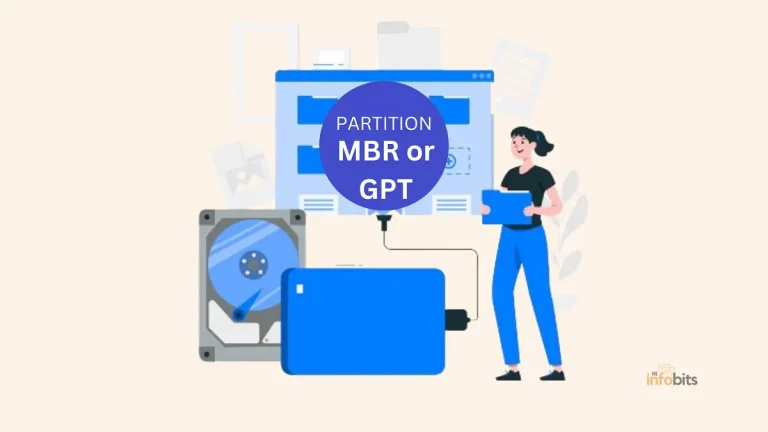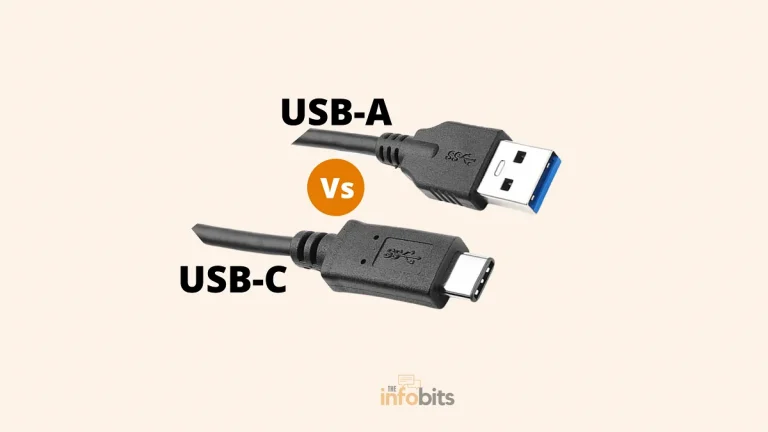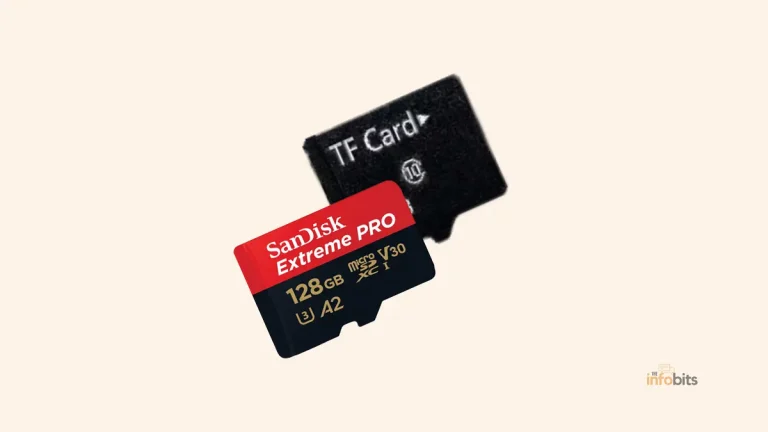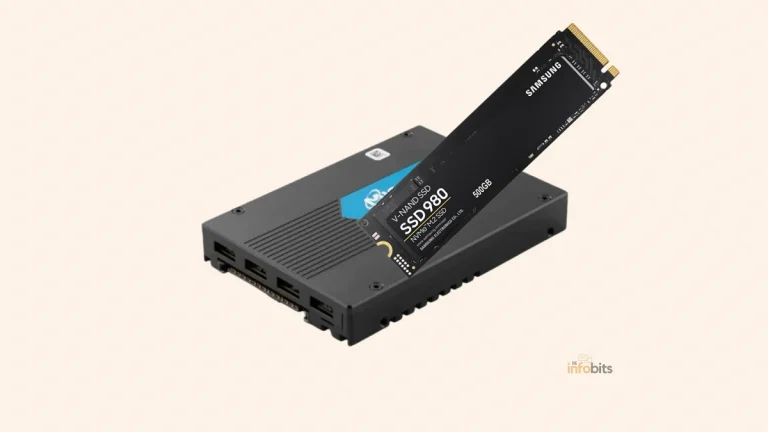IPS vs VA Panel TV: Which Panel Is Best for TV?
LCDs remain significant even after the arrival of newer display technologies. Currently, purchasing one of the greatest TVs requires one to choose between two key technological TV display types: an LED/LCD TV or an OLED TV.
We should not overlook the availability of NanoCell TVs. These NanoCell and OLED TVs are both newer and more pricey. LED/LCD TVs are always in the eye of the ordinary shopper.
LED/LCD TVs get their names from the two components that make up their displays: an LED (Light Emitting Diode) backlight and an LCD (Liquid Crystal Display) screen through which that backlight illuminates.
LED backlights come in several designs, although most current LCDs use one of the two-panel technologies. They are IPS (In-Plane Switching) and VA (Vertical Alignment).
This categorization is based on how Liquid Crystals align when they are electrified. The type of TV panel has a significantly greater influence on a TV’s performance than you may think.
Although there are various features and specs to consider when purchasing a television, such as screen size, brand name, HDR compatibility, and refresh rate, one essential hardware parameter is not often highlighted.
This is the kind of LCD panel that is employed. It also has an impact on contrast, color, and viewing angle.
In this article, we will discuss the differences between IPS TV and VA TV panels. In this way, we want to assist you in selecting the ideal TV for your specific needs.
If you are busy reading the post and want a quick comparison of the VA panel vs IPS, we are ready to provide it here.
A VA panel has a higher contrast ratio but a smaller viewing angle. An IPS TV panel, on the other hand, has a broad viewing angle but a poor contrast ratio.
So, ultimately, the optimal panel depends on how you want to utilize the TV. The following article discusses the many benefits and drawbacks of both these LCD panels and which one you should choose based on your needs.
IPS Panel TV
Individual pixels in an LCD are made up of liquid crystals triggered by voltage. These liquid crystals generate pictures and colors.
An IPS panel positions its crystals horizontally, parallel to the glass substrate. The name IPS stems from the fact that the liquid crystals of the screen are oriented horizontally called In-Plane Switching (IPS).
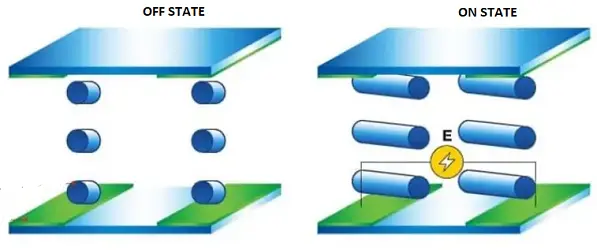
That implies these crystals are parallel to the glass substrates allowing the orientation to be adjusted by rotating the liquid crystal molecules in the same plane. Furthermore, the crystals’ structure and the electrodes’ positioning differ from the ones utilized in VA panels.
This is the technical explanation, but the main thing is to know, what performance this sort of panel is going to provide us and what benefits and downsides it gives.
An IPS panel has the enormous advantage of wide viewing angles. This implies that even if the TV is seen from a side angle, the contrast and color saturation of the pictures are preserved intact.
Some IPS panels enable lossless viewing angles up to 178°. So a TV with an IPS screen may be watched accurately from the sides and no need to sit directly in front of it.
So it is a smart idea to go with an IPS panel TV if you have numerous people in your family watching the TV from different sides of your TV room.
Another advantage of using an IPS panel is that their reaction time is generally faster than that of VA panels. The time it takes for the pixels to change is reduced, and they can give moving images with greater clarity.
Any IPS panel’s contrast levels are always lower than those of a VA panel. The black level obtained here is quite low, and dark greys are frequently visible instead of deep blacks.
These panels perform poorly when it comes to showing a bright image in the middle of a completely black screen. However, the black level on Full Array TVs with Local Dimming and Mini LED TV panel models can be enhanced.
IPS panels have higher light leakage issues than VA panels, however, this varies depending on the device and the type of backlight utilized.
Furthermore, the transition between dark tones is quite poor, resulting in a lot of information being lost in the shadow areas. When there are dark tones, all those tones tend to seem like one tone, and often the transitions between those multiple tones are not identifiable.
One further big problem with the IPS panels is that they display specific phenomena termed ‘IPS Glow‘. Because of the ‘IPS Glow,’ you may see certain bright patches on the screen’s corners.
This occurs when too much light passes through the display. In general, they are not the ideal choice for moviegoers since gloomy situations obscure a lot of information. This issue is more obvious in IPS panels than in VA panels.
IPS panels are frequently utilized in monitors because of their improved response time and better color reproduction and are highly suggested for picture editing.
LG is the leading maker of IPS panels. Some Sony and Panasonic models also contain IPS screens produced by LG. Initially, IPS panels were widely utilized in TVs because of their broad viewing angles, since we can watch TV in our living room from any angle.
But because of its improved quality, color accuracy, and reaction speed, LCD panels increasingly filled the high-end computer monitor and laptop screens.
Pros:
Cons:
VA Panel TV
We’ve seen what IPS panels are, and now it’s time to examine what VA panels are.
Unlike an IPS panel, a VA panel features an alignment of liquid crystals in a vertical plane to the glass substrate.
When exposed to voltage, the crystals tilt, allowing light to pass through and generate a color.
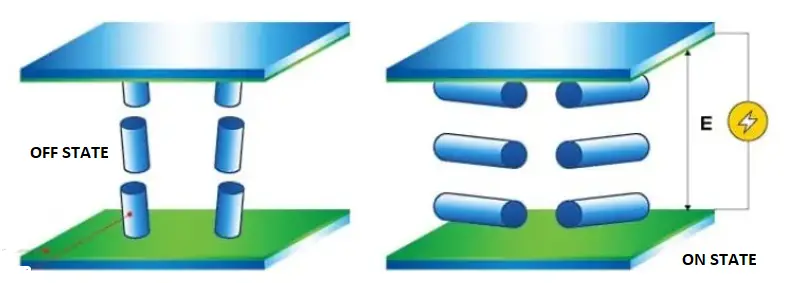
These are another prominent display type is VA (Vertical Alignment) panels, which are used for both computer monitors and TVs, but notably for the latter, where they outnumber their IPS counterparts.
A VA panel is used in the majority of LED/LCD TVs on the market.
We knew that IPS panels aligned their liquid crystals horizontally, whereas VA panels aligned them vertically. Instead of running parallel to the glass substrate, they run perpendicular to it.
The liquid crystals’ behavior alters as a result of this location. The liquid crystals in a VA panel do not tilt when there is no voltage applied, which is preferable if the purpose is to block light and generate picture depth.
VA panels have significantly higher contrasts than IPS screens. The reproduction of deep blacks and higher detail in shadow areas means that less information is lost than with IPS-type displays.
The contrast levels of a VA panel can be up to 300% greater than that of an IPS panel.
VA panels with contrast ratios of 3000:1 or 6000:1 are commonly available. A similar IPS panel will only have a 1000:1 contrast ratio.
Because the black tones achieved by the VA panel are usually significantly deeper, this is extremely evident in dark movie scenes.
Therefore, the VA panel is the greatest choice for moviegoers. Its biggest flaw is the viewing angles. They often have narrower viewing angles and contrast and color saturation degrade from 35-40 degrees.
However, new versions of these panels are being manufactured and the viewing angles are increasing, especially in the high end, and in some cases are equal to the angles provided by IPS.
The leading manufacturer of VA panels is Samsung and their TVs are generally installed panels created by themselves.
However, they, like LG, have drastically cut their output, and it is now normal for them to stock panels from other manufacturers.
Pros:
Con:
IPS vs VA Panel TV Comparison
Now that we’ve covered the fundamentals of these two-panel technologies. Let’s examine their respective strengths and shortcomings in each key metric.
Contrast Ratio
One of the pillars of picture quality is the contrast ratio, which refers to the range between a display’s lowest black depths and brightest spots.
This is undoubtedly VA panels’ strongest suit since they excel at generating deep, pitch-black levels. VA panels nearly always have deeper black depths than their IPS equivalents, which helps to provide a more detailed image.
IPS panels perform admirably in the contrast ratio sector, but they fall far short of VA panels. A 1000:1 contrast ratio is provided by an IPS panel.
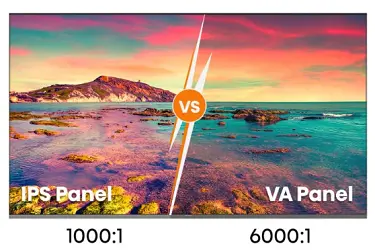
When viewing a black-and-white environment on an IPS display, the black color will seem somewhat greyed out.
VA panels give a greater contrast ratio of 6000:1 in some outstanding circumstances. It can make black situations appear even darker.
So, you will like the image detailing exhibited by the VA panels. On VA screens, blacks are purer than on IPS panels. In this regard, the difference between IPS and VA panels is usually quite noticeable, with contrast ratios reaching up to 300% in some cases.
Therefore, they are always a lot more recommendable for individuals who want to watch movies. In IPS displays there is a harsher transition in the shadow areas giving a grey spot look and losing more information in that area.
This difference, on the other hand, is most noticeable when watching TV in a dimly lit or dark room. As a result, VA panels are the best for watching movies and TV shows, especially in dim or low-light environments.
Winner: VA Panel
Viewing Angle
The total viewing angle of a television specifies how far a viewer may travel away from an ideal, head-on viewing posture before the picture’s contrast and color begin to decrease.
IPS panels thrive in this category because of the location of their liquid crystals; they often provide substantially greater viewing flexibility than TVs with VA panels.
In other words, IPS panels are more dependable in situations when a viewer must sit at an angle. Even if you sit at an extreme angle and watch TV, the image quality will not suffer.
IPS panels prevail here because they provide greater viewing from extremely wide angles.
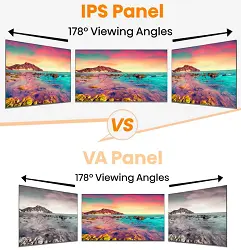
Colors and contrast are best preserved when viewed at angles higher than 35°. If you are going to view it from a remote corner or if you have a TV hanging on the wall and you watch it from extremely low or very sideways, an IPS screen is advised.
When viewing a more washed-out image on a VA screen, there is normally a significant loss of contrast from around 35-40 Degrees. To enjoy the visual quality, you must sit as near to the VA panel TV’s straight axis as possible. The visual quality will suffer significantly if you sit wider.
Furthermore, the colors tend to lose saturation and flatten down, losing detail and becoming more uniform.
In any case, some TVs with VA screens have a filter that enhances the viewing angle. In summary, especially in the low and mid ranges, IPS panels have a greater viewing angle than VA panels, therefore they are preferable if you see them from the sides.
Winner: IPS Panel
Color and Image Quality
Given the nature of their technology, IPS panels feature the widest color gamut. Even though the color spectrum is not as wide as that of the IPS panel, the VA panel does a decent job of displaying color changes.
However, the viewing angle is limited in the VA panel. As a result, you must sit directly in front of the TV monitor. You will be able to enjoy a realistic gaming experience with IPS panels as they feature a broad color spectrum.
Furthermore, as previously noted, they have greater viewing angles. So, you won’t notice any loss in visual quality even when you are not sitting in front of your TV monitor.
When it comes to color, IPS panels outperform VA panels. While all display types may provide amazing color reproduction, IPS panels offer a larger spectrum of hues and superior color accuracy; nevertheless, the introduction of further TV technologies such as quantum-dot color has significantly leveled the playing field.
In other words, the benefits of an IPS TV’s broader viewing angle are significantly more likely to be seen than its inclination for wider color. VA screen compensates for its acceptable color spectrum with an outstanding contrast ratio.
The distinction between light and dark hues will be visible in amazing detail.
Winner: IPS Panel
Burn-in Behavior
It is uncommon for burn-in or retentions to occur on LCDs, whether IPS or VA. This issue happens when an image is left static for an extended length of time.
However, the risk is increased with IPS-type panels. In any event, the danger is limited and not as probable as it may happen on OLED TVs.
Even on OLED TVs, the risk is extremely low nowadays if used at home and not in a retailer. The burn-in problem is especially severe in in-store TVs that display static pictures such as marketing banners.
Winner: Tie
Response Time
IPS panels normally come with a response time of 4 milliseconds. This is enough for viewing TV or playing most video games.
However, if you’re playing racing or first-person shooting games, you’ll need a response time of fewer than 2 milliseconds. Luckily, some of the newest IPS panels come with super-fast response speeds of 1 to 2 milliseconds.
However, VA panels typically have a slower response time of 5 milliseconds than IPS panels. So, there is a bigger potential for you to suffer motion blur.
But, some of the VA panels that come with a high price tag offer quicker response times. Because of its quick response time, the IPS panel is the winner.
Winner: IPS Panels
Refresh Rate
IPS panels feature one of the greatest refresh rates.
While an IPS panel with a refresh rate of 144Hz is common, some of the most recent models have a refresh rate of 360Hz.
If you are a serious online gamer, digital artist, or video editor, then you have to go with the greatest refresh rate within your budget.
VA panels have lower refresh rates than IPS displays. Most typical VA panels come with a maximum refresh rate of 120Hz.
If you want a greater refresh rate on a VA panel, you must be prepared to spend more money. There are also VA panels with a high refresh rate of 240Hz.
Winner: IPS PAnels
Black Uniformity
The capacity of a display to show black color uniformly throughout its screen is referred to as black uniformity.
IPS panels aren’t great at showing a consistent black hue throughout the whole screen. The dark color will seem somewhat greyed out due to the low contrast ratio.
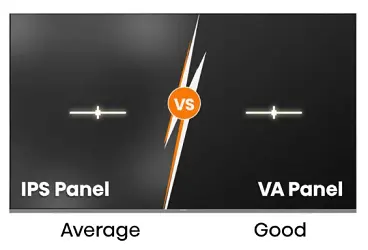
VA panels feature high black uniformity. But it also depends on the TV model you pick with.
Not all VA-panel televisions have good black uniformity. However, VA panels often have superior black uniformity than IPS screens.
The VA panel wins because it can display black color consistently throughout the screen.
Winner: VA Panel
IPS vs VA Panel TV Which Is Better?
Unfortunately, not only is a TV’s panel type rarely published on a manufacturer’s specs, but it’s also becoming increasingly unusual for a brand to provide a TV’s panel type even when we ask businesses directly for information.
The purpose of hiding the panel type is to do with marketing. It’s best to keep customers focused on a TV’s great performance specs rather than revealing the exact feature point like panel type.
To add to the confusion, various sizes of the same TV series sometimes mix and match display types; for example, the 55-inch version of a TV may have a VA-style display while the 75-inch model has an IPS display.
Fortunately, determining panel type is rather simple if you have the right tools and know what to look for. Certain test findings and viewing features function as explained indications.
Panel type is not the most important consideration when purchasing LED/LCD televisions.
Many additional characteristics, most of which are connected to the type and intensity of the LED backlight, can have a significant influence on contrast, viewing angle, and color intensity.
Finally, you must determine what you anticipate from television and how you want to utilize it. But by learning the key distinctions between IPS and VA LCD panels, you may at least make some fair predictions before you buy.
As we’ve seen, each has advantages and downsides based on your intended usage.
VA panels are ideal for watching movies and serials in dark rooms or a peaceful place in front of the television. They provide us with the highest contrast values and help us to discern more details in the dark portions of the image.
Furthermore, although it varies depending on the model, they often have fewer reflections.
IPS panels, on the other hand, are the finest option if your seat is not directly in front of the TV and you regularly watch it in a well-lit environment. Colors and contrast are maintained with less change when viewed from the sides.
Are IPS or VA Better for Gaming TV?
Unlike the top gaming monitors, IPS and VA TV panels compete on an equal footing.
Both technologies enable TVs to achieve high refresh rates of 120Hz or, on rare occasions, 240Hz (although they usually come in premium models).
If you focus on single-player gaming, or your multiplayer gaming happens online, the superb contrast of VA is the way to go.
If you’re looking for a big screen and plan on hosting movie nights with friends and family, an IPS-style panel is significantly more flexible due to its wider viewing angle.
Just be aware that certain stuff, particularly dark content, will not stand out as much due to the panel’s deeper black depths.
If you want the finest overall image, however, we recommend investing in a TV with a VA-style panel.
They aren’t necessarily great for group viewings, but the vast majority of the top non-OLED TVs on the market have this display type.
IPS panel TVs with high refresh rates and low response times are better for typical gaming.
Conclusion
To summarise, the fundamental distinction between the panels is the orientation of the liquid crystals.
The alignment causes changes in the panels’ performance and image quality.
The VA panels are perfect for usage in the office, for study, for high-end PC games, and for online gaming. If you require a panel for both indoor and outdoor use, the VA panel should suffice.
The IPS panel, on the other hand, is perfect for programmers, picture and video editors, and digital artists.
If you found this article useful, please share it with your friends and relatives.
We also ask that you bookmark this page for future reference, as we are constantly adding new information to our articles.
Sign up for our free newsletter as well to receive fresh information immediately in your inbox and keep technically up to date.



